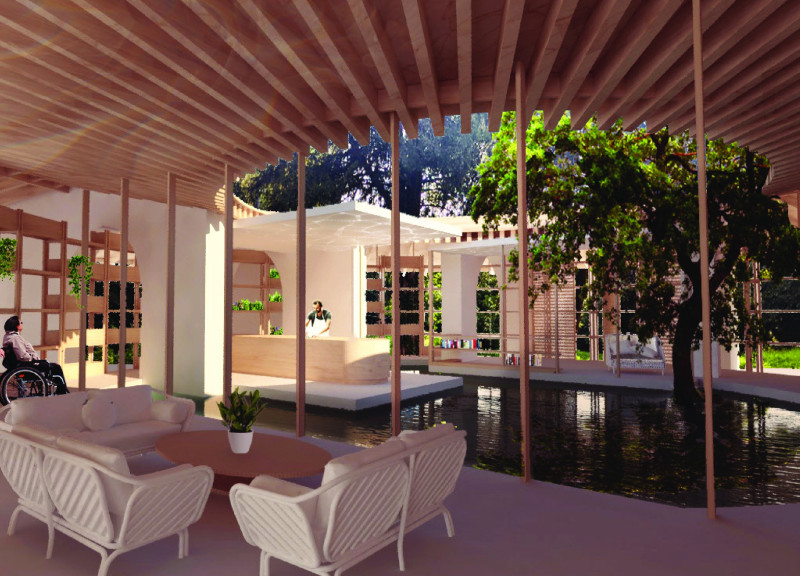5 key facts about this project
The Floating Wreath is located in a park in Stuttgart, Germany, designed to provide palliative care for terminally ill patients. It focuses on creating a peaceful environment that supports both physical and emotional well-being. The design concept is based on the idea of a wreath, which represents eternal life and continuity. This theme informs the layout and overall feel of the space.
Site Integration
The choice of site is essential to the project's success. The building is set within a green park that protects it from the noise of the city. The natural slope and surrounding trees create a calm atmosphere, helping patients and their families feel at ease. The park is divided into two areas: one open for public use and the other dedicated to The Floating Wreath. This garden space allows patients to connect with nature.
Spatial Organization
The facility has two levels designed for different activities. The upper level features common areas that encourage social interaction among patients and families. The lower level offers private spaces for rest and reflection. Corridors facilitate movement throughout the building. A central spine serves as a divider and includes various functions like an herb garden, a library, and a memory wall. These features help integrate nature into daily life within the facility.
Sustainability
Sustainability is an important aspect of the design. Stone and timber are used for their eco-friendly qualities and reusability. The stone walls help maintain a comfortable temperature through their thermal mass. The elevated timber structure reduces disturbance to the park's environment. Rainwater is collected to irrigate the conservatory and herb garden, demonstrating the project's commitment to preserving natural resources.
The Floating Wreath addresses the needs of patients in a supportive environment. Each design detail contributes to a nurturing atmosphere that promotes healing and reflection. The combination of natural elements and thoughtful space planning makes it a unique facility focused on care and comfort.



















































